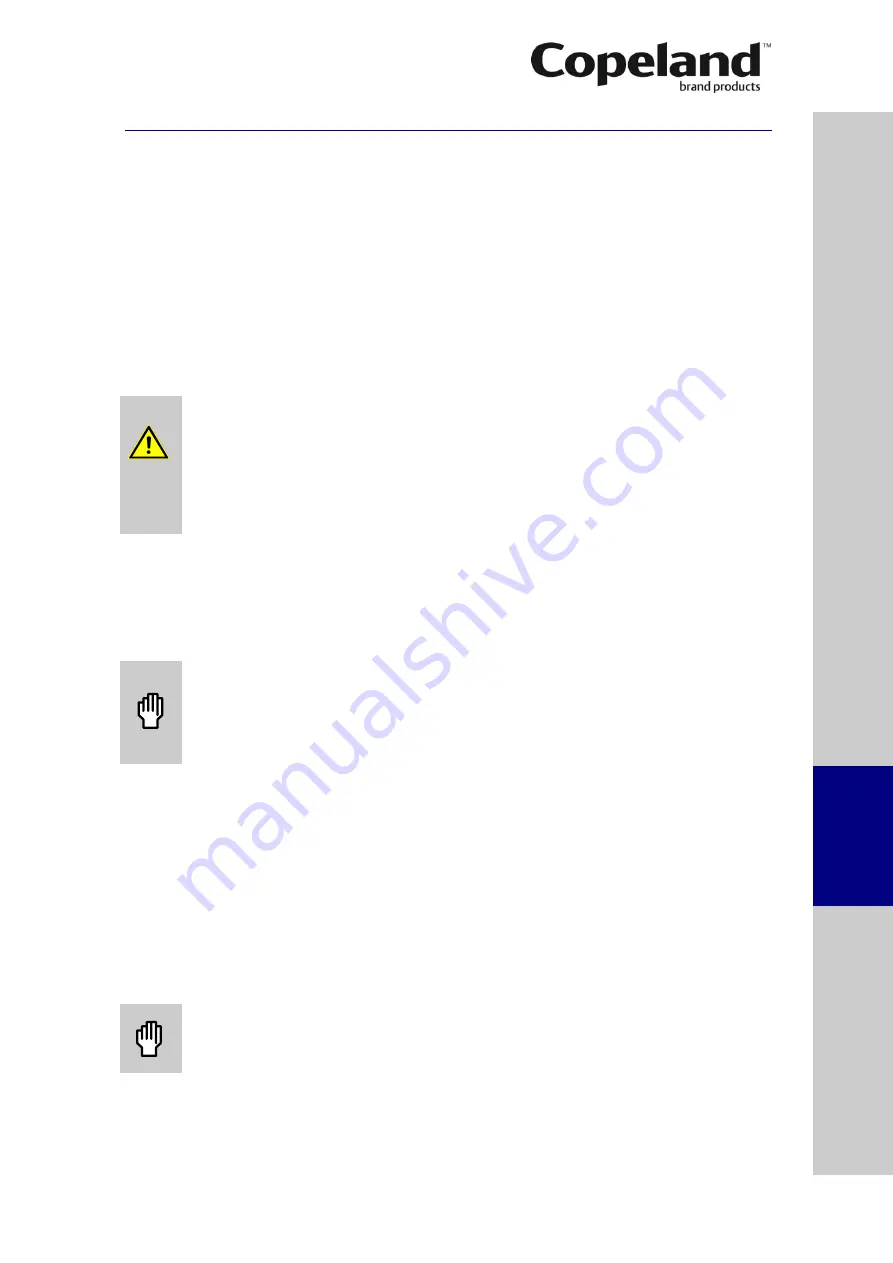
D6.3.4/0715-0716/E
25
6
Maintenance & repair
6.1
Exchanging the refrigerant
Qualified refrigerants and oils are given in section 2.5.1.
It is not necessary to replace the refrigerant with new unless contamination due to an error such
as topping up the system with an incorrect refrigerant is suspected. To verify correct refrigerant
composition, a sample can be taken for chemical analysis. A check can be made during shut
down by comparing the refrigerant temperature and pressure using precision measurements at a
location in the system where liquid and vapour phases are present and when the temperatures
have stabilised.
In the event that the refrigerant needs replacing, the charge should be recovered using a
suitable recovery unit.
6.2
Refrigerant retrofit from HFC to HFO/HFC blends
Beside the standard retrofitting procedures on HFC systems, when retrofitting
to HFO/HFC blends, like for example R450A, R513A, it is critical to fulfil the
following conditions:
maintain adequate superheat settings
no liquid refrigerant migration into the compressor at any time, especially
during standstill, during or after defrost, or after reverse mode for
example in heat pumps.
Contact Application Engineering for any further information.
6.3
Shut-off valves
Rotalock shut-off valves or shut-off valve bolts should be periodically re-torqued to ensure that
leak prevention tightness is maintained.
6.4
Compressor replacement
CAUTION
Inadequate lubrication! Bearing destruction!
Exchange the accumulator
after replacing a compressor with a burned out motor. The accumulator oil
return orifice or screen may be plugged with debris or may become plugged.
This will result in starvation of oil to the new compressor and a second
failure.
In the case of a motor burnout, the majority of contaminated oil will be removed with the
compressor. The rest of the oil is cleaned through the use of suction and liquid line filter driers. A
100% activated alumina suction line filter drier is recommended but must be removed after 72
hours.
It is highly recommended that the suction accumulator be replaced if the system
contains one.
This is because the accumulator oil return orifice or screen may be plugged with
debris or may become plugged shortly after a compressor failure. This will result in starvation of
oil to the replacement compressor and a second failure. When a single compressor or tandem is
exchanged in the field, it is possible that a major portion of the oil may still be in the system.
While this may not affect the reliability of the replacement compressor, the extra oil will add to
rotor drag and increase power usage.
6.5
Lubrication and oil removal
CAUTION
Chemical reaction! Compressor destruction!
Do not mix up ester oils with
mineral oil and/or alkyl benzene when used with chlorine-free (HFC)
refrigerants.
The compressor is supplied with an initial oil charge. The standard oil charge for use with
refrigerants R404A, R407A, R407C, R407F, R448A, R449A, R450A, R134a and R507, is a
polyolester (POE) lubricant Emkarate RL 32-3MAF. In the field the oil level could be topped up
with Mobil EAL Arctic 22 CC if 3MAF is not available.
S
afet
y
in
struct
ion
s
P
ro
d
u
ct
d
es
cr
ipt
ion
Inst
all
atio
n
E
lec
tr
ica
l
c
o
n
n
ec
tion
S
tar
ting
up
&
o
p
er
atio
n
Ma
int
enan
c
e &
repai
r
T
ro
u
b
le
-
sho
o
ting
Dismant
ling
&
d
ispo
sa
l
















































